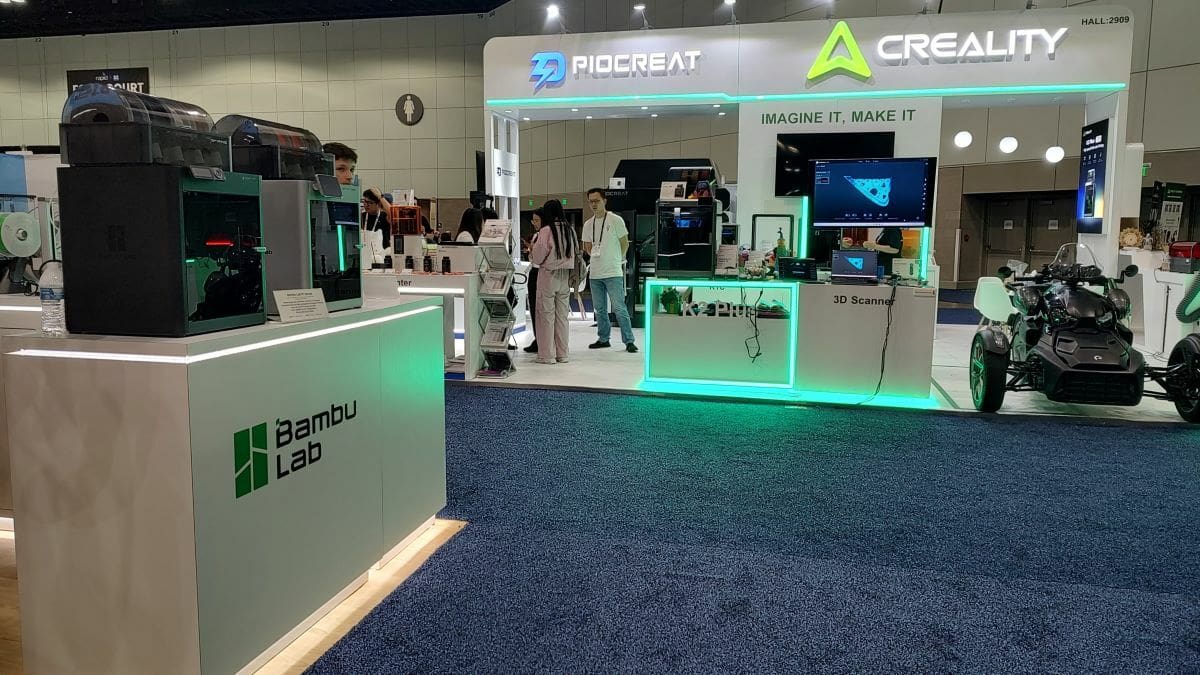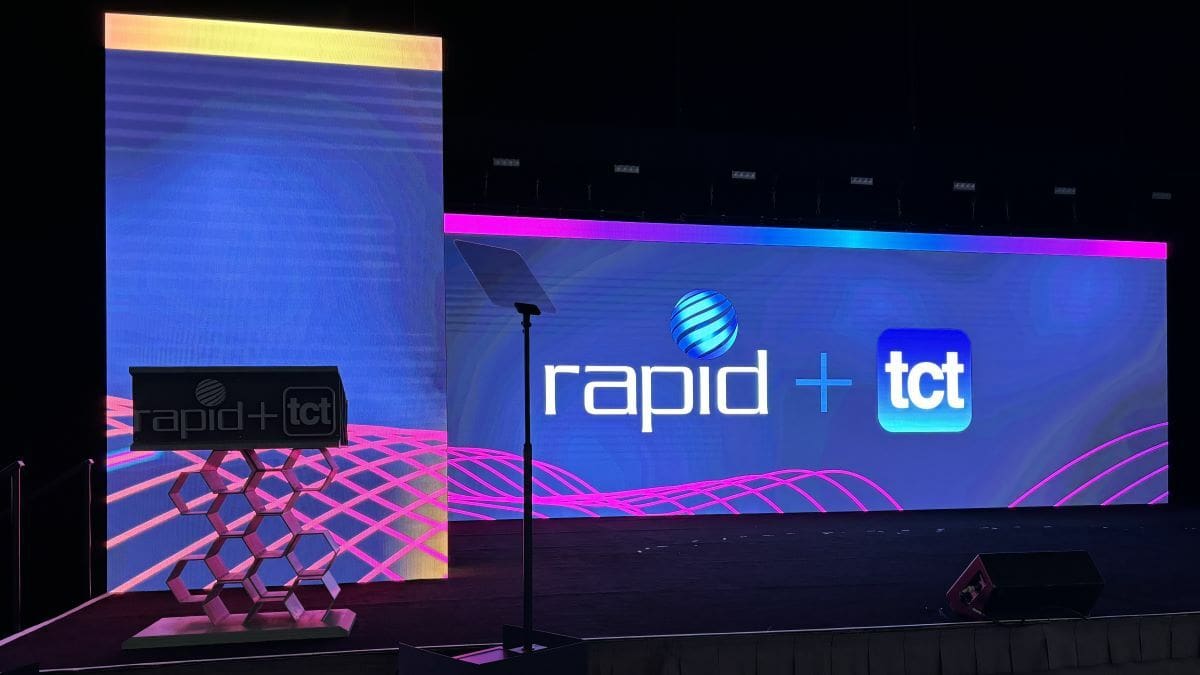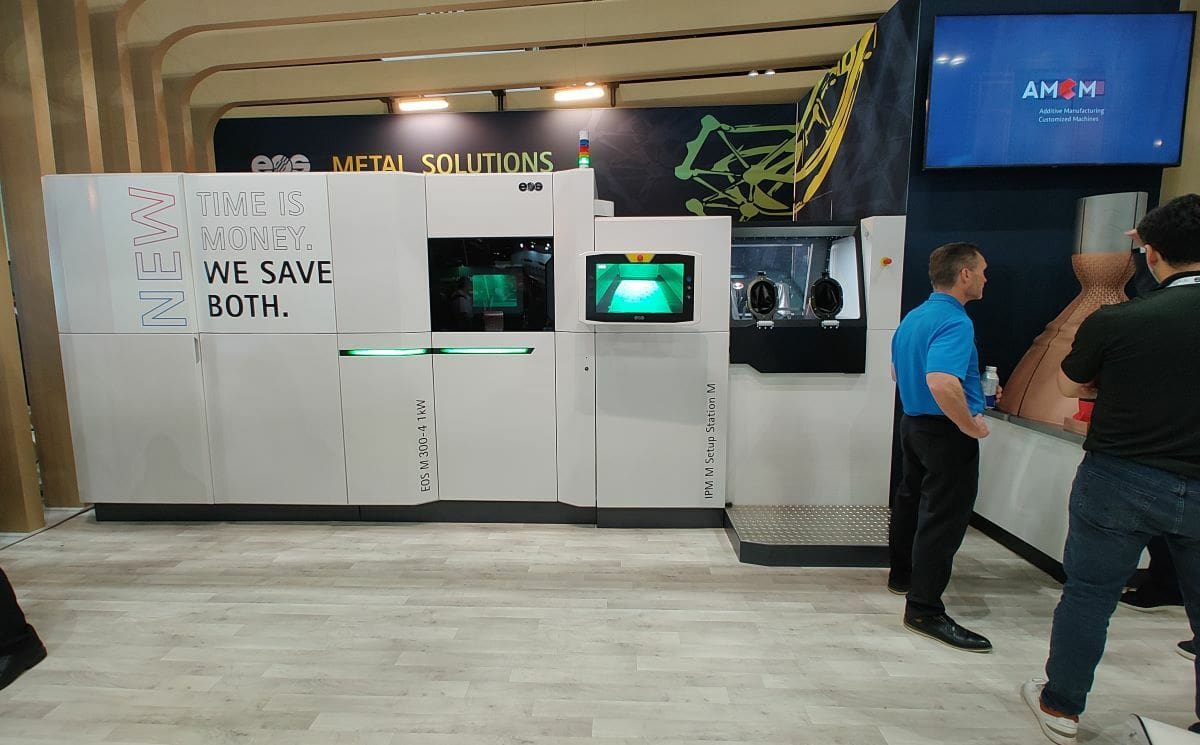All3DP’s Content Academy writer Gedeon Ang attended Rapid + TCT 2024. Currently a high school student from Singapore, he’s passionate about additive manufacturing technologies and their applications, as well as engineering. An avid member of the 3D printing community – his Voron’s serial number is VT.950! –, he’s carried out several 3D printing- and engineering-related projects, funded with prizes from competitions.
Gedeon’s latest project involves using creative design techniques and SLS 3D printing to create a highly space- and material-efficient, modular urban farming system. This is meant to aid in solving food security and sustainability issues in space-scarce cities, as can be found in Singapore and other countries.
Apart from other national and international awards (most notably 2nd place in the Engineering Technology: Statics and Dynamics category at the International Science and Engineering Fair), this project won the top recognition for the high school category for the Society of Manufacturing Engineers (SME)’s Digital Manufacturing Challenge. One of the prizes for this award was a complimentary full conference pass to Rapid + TCT. Of course, Gedeon had to go as he’s always wanted to attend an event like this. From Gedeon and All3DP, thank you so much, SME!
We’ve asked Gedeon a few questions about his experience at Rapid + TCT. Read on to find out about his thoughts on the conference!
All3DP: Why did you decide to attend Rapid + TCT or what was your main goal in attending? Were you looking to find new printers for yourself or your organization, or were you just interested in learning about advances in the technology, or both?
Gedeon: I attended Rapid + TCT to learn more about the latest AM technologies and listen to keynotes and conferences from leading experts to improve my knowledge and to give me ideas and directions for my future research and projects.
I also looked forward to checking out the show floor, where hundreds of 3D printing companies, big and small, hobbyist to industrial, set up booths to showcase their latest products and innovations. I’m especially interested in metal powder bed fusion (PBF) technologies such as selective laser melting (SLM), I was excited to see these complex and expensive machines in real life. The laser melting process is even more cool and amazing than I thought. I’m hooked.
This doesn’t just include the million-dollar SLM or EBM machines! Yes, I haven’t yet seen or touched a Bambu Lab printer physically. The X1C is quite a lot smaller than I expected 🙂
Did you do pre-event planning for your visit with the goal of seeing any particular manufacturer? If yes, who?
I did pre-event planning for the conference talks I would like to attend. For manufacturers, I had generous time to explore the entire show floor, so I had the opportunity to browse through every booth and focus on and check out the ones that I was interested in.
How easy was it to speak to people at the expo booths and get the information you wanted?
It was very easy to speak to people at the expo booths and ask them questions. Everyone is friendly and willing to share – just go up and say hi!
What did you find most impressive or noteworthy about the conference?
It was my first time attending a professional conference physically, so I do not have much of a comparison. However, the conference presentations at Rapid + TCT were generally skewed towards the industry and applications, rather than research-based studies.
Regarding the exhibition, I found it very impressive that all the firms brought in their machines and were in operation in real time so that attendees could see the machines running. This included very large or complex machines, as well as their demo or showcase parts.
The most impressive/my favorite conference session is explained more in the question below.
Which presentations did you attend?
I went for the following presentations:
- It’s not Rocket Science: Unveiling the Myths and Realities of “AM Qualification” for Aerospace & Defense Applications
- Creating Thin Wall Inconel Structures with Machined Finish Equivalent in as Printed Condition
- 3D Printing of Design-Specific PEEK-Based Standalone Bioactive Implants
- Rapid Part Development for Serial Production in Aerospace and Defense
- Yes, You Can 3D Print Metal in the Field, BUT…
- Thermoplastic Liquid-Crystal Polymer Filament for Fused Filament Fabrication of High-Strength Continuous-Fiber Composites
- Achieving Printable Filament Diameter Tolerance (FDT) for Fused Filament Fabrication (FFF) 3D Printing with Air Cooling
- The Journey with Large AM Titanium Parts (1 Ton Class) Material Properties, Testing and Lessons Learned
- High-Temperature Polymer Composite Additive Manufacturing for Electronic Tooling
The one I enjoyed most was “3D Printing of Design-Specific PEEK-Based Standalone Bioactive Implants” by Prof. Prabaha Skider from Cleveland State University. The research experiments using Amorphous Magnesium Phosphate (AMP) nanoparticle powder as an additive to Poly-ether-ether-ketone (PEEK) to improve bone implant contact percentage, improving the bioactive performance regular PEEK implants. This makes it a suitable alternative (or even an outperforming alternative, as PEEK has similar density and Young’s modulus to human bone) to typical Titanium (Ti-6Al-4V / Ti64) implants.
Which companies were you surprised to see?
I wasn’t particularly surprised to see any company. Most companies that were somewhat decently sized had an exhibition booth there.
What was your overall impression of the event or your biggest takeaway?
The event was an enjoyable and valuable experience, and was very focused on the industry.
One interesting take on AM in keynote panels was from Mr. Yoav Stern, CEO of Nano Dimension, where he gave an interesting perspective that additive manufacturing isn’t an industry. He cited examples of 3D printed meat and 3D printing for aerospace parts using different AM processes and materials, serving different end users and for different applications and requirements. Keynote panelists, consisting mostly of top executives of the leading AM firms such as EOS and SLM solutions, also claim that their companies were not profitable, which came as a surprise to me. On the other hand, corporations that leverage the use of AM technology to its fullest, such as Invisalign and SpaceX, do very well.
How would you compare this year’s event with others you attended?
I haven’t attended other 3D printing fairs as our community here in Singapore is quite small, but I’ve attended national and international science and engineering fairs. These serve as a platform for high school students to showcase their science and engineering projects, and they are judged by academic and industry professionals for their innovativeness, creativity, impact, and execution. Good projects at regional or national fairs win prizes, and top projects also receive the opportunity to represent their country to compete in the International Science and Engineering Fair (ISEF). This only consists of 1% of all projects submitted to ISEF affiliated fairs.
It is always fun to participate in such fairs as I get the opportunity to interact with other students and learn about their projects. Presenting our projects to other finalists and judges also give us students an opportunity to showcase our hard work and discuss various projects with others with similar interests in science and engineering.
Rapid + TCT is undoubtedly quite different. Instead of being a competition, Rapid + TCT is a show where attendees can find out more about products from an exhibitor, and where exhibitors can promote their products. Rapid + TCT is also an event geared towards professionals and the industry, and is based solely on additive manufacturing and its related technologies. It focuses on how various AM products and technologies can impact the manufacturing industry. Also, the conferences at Rapid + TCT was also more industry- rather than research-focused. It’s also a much more “high-level” event as compared to hobbyist 3D printing fairs or science and engineering fairs for high school students.
License: The text of "An AM Enthusiast’s Take on Rapid + TCT" by All3DP is licensed under a Creative Commons Attribution 4.0 International License.


